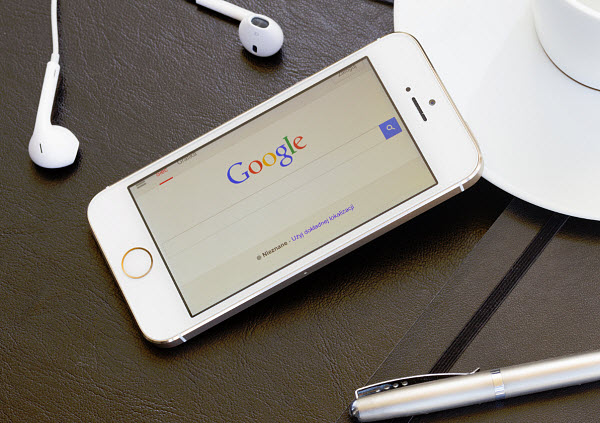These files are now created with Word indexes and simplify compatibility issues for new and legacy documents.
Users of Google Docs now have a new feature available to them, as they are able to use EPUB format when they export their documents, including the ability to convert Word indexes into chapter lists that can be clicked by the viewer.
This announcement was made rather quietly, earlier this month by the team at Google Apps.
The introduction of the new Google Docs feature may have seemed like a rather quiet one, but it could represent a considerable step forward in making it possible for a spectrum of new and legacy documents to be accessible from one device to the next. Since the EPUB format has become a common format for everything from textbooks to young adult fiction novels and even academic treatises, it was a natural fit for this new feature. The format is appealing due to its ease of compatibility as well as the reliability of its hyperlinked chapter indexes created through standard word processing software such as Microsoft Word.
This format allows Google Docs to better cater to the use and exporting of longer works such as novels.
 Unlike when Word documents are uploaded as a Google Doc file, viewable in GDocs, where the indexes originally created in the .doc file may not work (that is, by clicking a chapter, the viewer will not be automatically brought to that page), when it is exported as an EPUB, the chapter indexes are all completely preserved. This makes for a much more convenient reading experience and can be very important when viewing a longer document.
Unlike when Word documents are uploaded as a Google Doc file, viewable in GDocs, where the indexes originally created in the .doc file may not work (that is, by clicking a chapter, the viewer will not be automatically brought to that page), when it is exported as an EPUB, the chapter indexes are all completely preserved. This makes for a much more convenient reading experience and can be very important when viewing a longer document.
EPUB, itself, is based on the XML publication standard and is both free and open. Its standard was ratified by the International Digital Publishing Forum and overcomes many of the barriers and limitations presented by certain other common formats such as Adobe’s PDF which can lead to a more cumbersome reading experience, particularly when shifting from one device to the next.
It is likely that this could become a highly popular feature in Google Docs and could present a way to translate full libraries of legacy Word-based documents into a more modern and compatible cross-device format.
Denny |
December 10, 2015
The technology giant has now made it possible for marketers to stream an app from the web into a device.
Recently, Google changed the way web searchers could discover the information they were seeking to find, even when it was located exclusively within an app, as it has developed a way to use mobile ads with streaming and has now implemented it.
This makes it possible for search results to include what had previously been content exclusive to mobile apps.
Using this new streaming tech, it means that when a query is made in Google over a smartphone or tablet, the results that appear will not be limited to websites. They could also include information that had previously been inaccessible outside of downloading and launching a mobile app. Now, the search engine will also provide results including in-app content and the app can be streamed from the web to the mobile device if it is not already installed. This will mean that mobile ads will also appear in front of people who are streaming the apps, not just those who are running them from their own device.
The mobile ads that can be displayed when the app is streamed include those running on the AdMob network.
 At the moment, that network is estimated to reach around 650,000 mobile apps, so the publishers of those apps will now be able to create ads that are actually smaller versions of the full sized mobile games, up to a maximum of sixty seconds.
At the moment, that network is estimated to reach around 650,000 mobile apps, so the publishers of those apps will now be able to create ads that are actually smaller versions of the full sized mobile games, up to a maximum of sixty seconds.
Furthermore, beyond the difference that has been made in the mobile app streaming, Google has also announced that it is bringing in a second type of app install ad formats, which will involve ads that are swipeable, more engaging and more mobile friendly. They have been called “Interactive Interstitials”.
According to the new head of product for mobile advertising at Google, Sissie Hsiao, the purpose for these two new app install formats is to make it possible for developers to connect with the right users for their applications.
These mobile ads aren’t just to help an application to be downloaded. Instead, Hsiao pointed out that it will improve the rate of download by actual users. The reason is that the current trend shows that many applications are downloaded but are used only once or even never once they’re on the device.
 Unlike when Word documents are uploaded as a Google Doc file, viewable in GDocs, where the indexes originally created in the .doc file may not work (that is, by clicking a chapter, the viewer will not be automatically brought to that page), when it is exported as an EPUB, the chapter indexes are all completely preserved. This makes for a much more convenient reading experience and can be very important when viewing a longer document.
Unlike when Word documents are uploaded as a Google Doc file, viewable in GDocs, where the indexes originally created in the .doc file may not work (that is, by clicking a chapter, the viewer will not be automatically brought to that page), when it is exported as an EPUB, the chapter indexes are all completely preserved. This makes for a much more convenient reading experience and can be very important when viewing a longer document.
 At the moment, that network is estimated to reach around 650,000 mobile apps, so the publishers of those apps will now be able to create ads that are actually smaller versions of the full sized mobile games, up to a maximum of sixty seconds.
At the moment, that network is estimated to reach around 650,000 mobile apps, so the publishers of those apps will now be able to create ads that are actually smaller versions of the full sized mobile games, up to a maximum of sixty seconds.